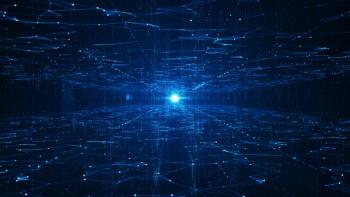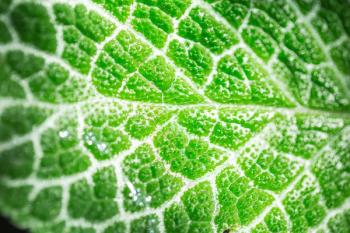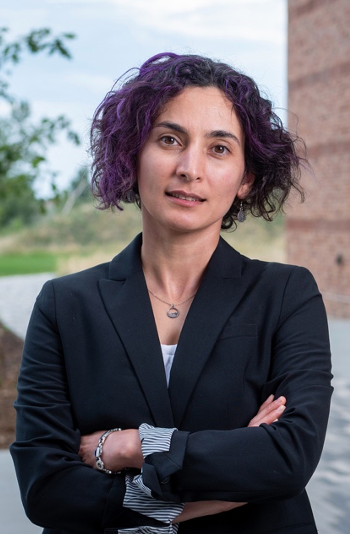
Spectroscopy at Analytica
Analytica 2016, held this week in Munich, includes strong programming in spectroscopy techniques. Two sessions-one on modern analytical spectroscopy and another on bioprocessing monitoring-are entirely dedicated to spectroscopy.
Analytica 2016, held this week in Munich, includes strong programming in spectroscopy techniques. Two sessions-one on modern analytical spectroscopy and another on bioprocessing monitoring-are entirely dedicated to spectroscopy. Other sessions, on industrial processing, energy production, nanoscale analysis, bioanalysis, and disruptive technologies, include individual talks on the use of spectroscopic methods.
Modern Analytical Spectroscopy
Gary Hieftje of Indiana University kicks off the session on modern analytical spectroscopy-chaired by Wolfgang Buscher of the University of Munster and Kerstin Leopold of Ulm University-by looking at new developments in sources and spectrometers for atomic, speciation, isotopic, and metallomic analysis.
The other talks in this session all deal with various aspects of the analysis of biological matrices. Jörg Feldmann of the University of Aberdeen will address the challenges presented by arsenic speciation, particularly in the analysis of arsenolipids, and Eva M. Krupp of the same institution, will discuss the use of laser-ablation ICP-MS in the analysis of mercury detoxification in pilot whales. Two talks, by Jörg Bettmer of the University of Oviedo and Torsten Vielhaber of the University of Münster, will address the analysis of nanoparticles in biological tissues. Maria Montes-Bayón of the University of Oviedo will discuss the challenges of analyzing iron oxide nanoparticles as therapy for iron deficiency.
Jürgen Popp of Friedrich Schiller University Jena will report on Raman approaches for the clinical diagnosis and therapy of infectious diseases and cancer. Christoph Haisch of the Technical University of Munich will look at the use of surface-enhanced Raman spectroscopy (SERS) for the fast identification of pathogenic bacteria. Andreas Römpp of the University of Bayreuth will discuss developments in mass spectrometry imaging.
The Bunsen-Kirchhoff Award will also be presented during this session. The award, presented by the German Working Group for Applied Spectroscopy (DASp), is dedicated mainly to young scientists for extraordinary contributions in the field of spectroscopy.
Bioprocess Monitoring
The session on bioprocess monitoring, chaired by Prof. Bernd Hitzmann of Hohenheim University, starts with a presentation by Dörte Solle of Leibniz University on the challenges, limitations, and possibilities of using spectroscopy for bioprocesses. Other talks in the session cover bioprocess monitoring using Raman spectroscopy (by Alexander Pitters of Kaiser Optical Systems), near-infrared (NIR) spectroscopy (by Thomas Becker of the Technical University of Munich and Rebecca Vangenechten of Siemens) and fluorescence spectroscopy (by Sapusda Assawajaruwan of the University of Hohenheim).
Disruptive Imaging Technologies
A session on disruptive imaging technologies will include talks on mass spectrometry imaging (by B. Balluff of Maastricht University), imaging of plant tissues using stimulated Raman scattering (by Julian Moger of the University of Exeter), histology using multiphoton tomography with coherent anti-stokes Raman spectroscopy (CARS) (by Karsten König of JenLab GmbH) and video-rate label-free imaging with CARS microscopy (by Zhongxiang Jiang of Leica Microsystems).
Other Talks on Spectroscopic Methods
In other sessions, inductively coupled plasma–mass spectrometry (ICP-MS) methods are presented in two talks, one on the analysis of engineered nanoparticles, in conjunction with asymmetric flow field-flow fractionation (by Bjorn Meerman of the German Federal Institute of Hydrology) and another on the characterization of quartz deposits, in conjunction with laser-ablation ICP-MS and secondary ion mass spectrometry (by Axel Müller of University of Oslo). Other talks on atomic techniques will include presentations on mineral phase determination by X-ray diffraction (by Robert Möckel of the Helmholtz Institute Freiberg for Resource Technology) and laser-induced breakdown spectroscopy (LIBS) in the analysis of secondary materials in industrial production (by Johannes D. Pedarnig of Johannes Kepler University).
On the molecular spectroscopy side, Analytica will include a number of talks on vibrational techniques. D.C. Muddiman of North Carolina State University will discuss the use of a novel microscopy technique, infrared–matrix-assisted laser desorption electrospray ionization (IR–MALDESI), for the analysis of drug distribution in tissues. Dana Cialla-May of Friedrich Schiller University Jena will give a talk on surface-enhanced Raman spectroscopy (SERS) in bioanalysis. A talk in the energy and fuels session discusses the use of fluorescence spectroscopy in the analysis of heavy oils and asphaltenes (by Simon Ivar Andersen of Schlumberger).
In a presentation dealing with both molecular and atomic techniques, Michael Maiwald of the German Federal Institute for Materials Research and Testing (BAM) will look at the role of reference materials in process analytical technology using methods such as LIBS, X-ray fluorescence analysis, and Raman spectroscopy.
Talks on the Exhibit Floor
On the exhibit floor, the “Laboratory and Analysis Forum” will also include presentations on spectroscopy, by scientists from instrumentation companies. Katherine A. Bakeev of B&W Tek, Inc. will give a talk on next-generation portable spectrometers. Dan Wood of Keit Spectrometers will discuss the use of FT-IR spectroscopy in in-line process monitoring in manufacturing industries. Wolfgang Ritter of QuantaRed Technologies will present opportunities for mid-IR quantum cascade lasers in liquid and gas sensing. Frederic Despagne of ABB Measurement & Analytics will report on the use of Fourier transform NIR spectroscopy for quality analysis of packaging materials.
Newsletter
Get essential updates on the latest spectroscopy technologies, regulatory standards, and best practices—subscribe today to Spectroscopy.





